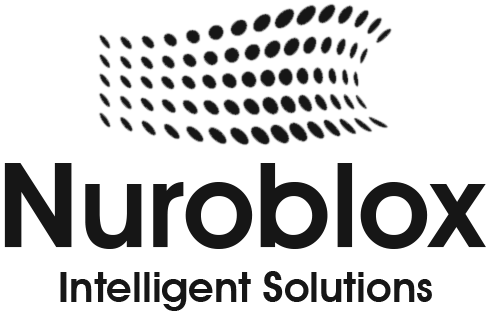How Might AI’s Real-Time Tracking and Route Optimization Transform Logistics
The Next Frontier of Logistics Efficiency
Global logistics has long faced the dual challenge of increasing delivery efficiency while managing costs. Traditional methods rely heavily on static routing, manual planning, and limited visibility. These practices often create bottlenecks, inefficiencies, and customer dissatisfaction. Enter Artificial Intelligence.
AI-powered real-time tracking and route optimization are rapidly reshaping the logistics industry by providing immediate visibility across supply chains and recalibrating delivery paths based on live data. According to a McKinsey & Company report (2023), AI has the potential to increase supply chain forecasting accuracy by 35% and reduce logistics costs by up to 15%.
The Evolution of Logistics Visibility
From Paper Trails to Predictive Intelligence
Logistics tracking evolved from manual ledgers to barcodes and eventually GPS-enabled systems. However, conventional GPS systems only provide static positional data without context. This leads to inefficiencies such as delayed rerouting during traffic congestion or lack of proactive communication with customers.
AI moves visibility from being reactive to predictive and prescriptive meaning it not only tells you where a shipment is now, but also where it will likely be, the risks it may encounter, and the optimal path forward.
Core Technologies Driving AI-Enhanced Logistics
AI’s advantages in logistics come from the convergence of multiple enabling technologies.
| Technology | Function in Logistics |
| Machine Learning | Learns from delivery patterns, demand fluctuations, and traffic conditions |
| Predictive Analytics | Forecasts delivery delays and demand surges |
| Computer Vision | Enables real-time asset identification, warehouse automation, and vehicle monitoring |
| IoT Sensors | Collects live performance data on shipments, vehicles, and warehouse assets |
| Natural Language Processing | Enhances communication between systems, dispatchers, and customers |
| Reinforcement Learning | Continuously improves route recommendations based on outcomes |
Together, these technologies allow logistics providers to move from static decisions to dynamic optimizations in real time.
Real-Time Tracking- Visibility Redefined
End-to-End Transparency
AI-driven tracking goes beyond GPS pings. Through a network of IoT sensors, RFID tags, and predictive algorithms, it enables-
- Precise Asset Location- Containers, pallets, or individual packages can be monitored continuously.
- Condition Monitoring- Sensors track temperature, humidity, or vibration for sensitive goods (e.g., pharmaceuticals).
- Exception Alerts- AI flags anomalies such as unexpected stops, tampering, or cold-chain breaches.
Route Optimization- AI as the Smart Navigator
AI’s route optimization differs significantly from conventional algorithms by leveraging real-time contextual data.
Key Inputs for AI Route Optimization
- Traffic Flow- Live congestion updates from connected infrastructure.
- Weather Conditions- Predictive models anticipate disruptions from storms or heatwaves.
- Driver Behavior & Vehicle Health- AI systems reroute based on fatigue risks or fuel efficiency.
- Regulations & Restrictions- Compliance-aware routing in regions with tolls, emissions rules, or urban delivery restrictions.
Business Benefits of AI Route Optimization
- Reduced Fuel Costs- AI identifies routes that cut down on idle time and detours.
- Improved On-Time Delivery- Predictions adjust on the fly for unexpected delays.
- Enhanced Fleet Utilization- Vehicles are dynamically allocated, minimizing empty return trips.
- Lower Carbon Emissions- Optimized routing directly impacts sustainability targets.
The Impact on Logistics Stakeholders
The transformation affects multiple nodes in the logistics ecosystem-
| Stakeholder | AI Advantages |
| Logistics Operators | Lower fuel expenses, better fleet utilization |
| Businesses & Retailers | More reliable delivery windows, improved inventory management |
| Consumers | Accurate delivery times, real-time order tracking, enhanced customer experience |
| Policy Makers / Cities | Reduced congestion and emissions through intelligent urban delivery |

E-Commerce Fulfillment – E-commerce giants now use AI to dynamically schedule last-mile delivery, reducing both delivery times and failed attempts.
Cold-Chain Logistics – Pharmaceutical distributors use AI sensors to monitor and reroute refrigerated trucks before a breakdown occurs, reducing medical product spoilage.
Freight and Long-Haul – Truck fleets equipped with AI-enabled telematics automatically adjust for highway closures, balancing delivery time with cost efficiency.
Urban Micro-Distribution – AI enables sustainable last-mile delivery using electric and autonomous vehicles, adjusting routes for battery levels and charging station availability.
Challenges and Considerations
While AI adoption promises significant improvements, enterprises must also address the following-
- Data Integration – Legacy systems often struggle with IoT and AI interoperability.
- Cybersecurity Threats – Connected logistics networks increase risks of hacking or data breaches.
- Scalability – AI solutions need to handle high-volume operations across borders.
- Change Management – Workforce training is essential to benefit from AI-driven decision-making.
AI as the Logistics Orchestrator
By 2030, AI will not just optimize individual routes but orchestrate end-to-end global logistics ecosystems. This will involve-
- Self-optimizing supply chains that automatically adjust to demand shocks.
- Interconnected logistics intelligence across suppliers, warehouses, and carriers.
- AI collaborating with autonomous vehicles, drones, and robotic warehouses for near-instant deliveries.
Positioning for Competitive Advantage
The question “How might AI’s real-time tracking and route optimization transform logistics” has a clear answer- It fundamentally revolutionizes efficiency, transparency, and reliability, enabling logistics companies to stay competitive in an increasingly complex global market.
Enterprises that embrace AI-driven logistics solutions today will be better positioned to deliver superior
customer experiences, cut operational costs, and meet sustainability goals tomorrow.


